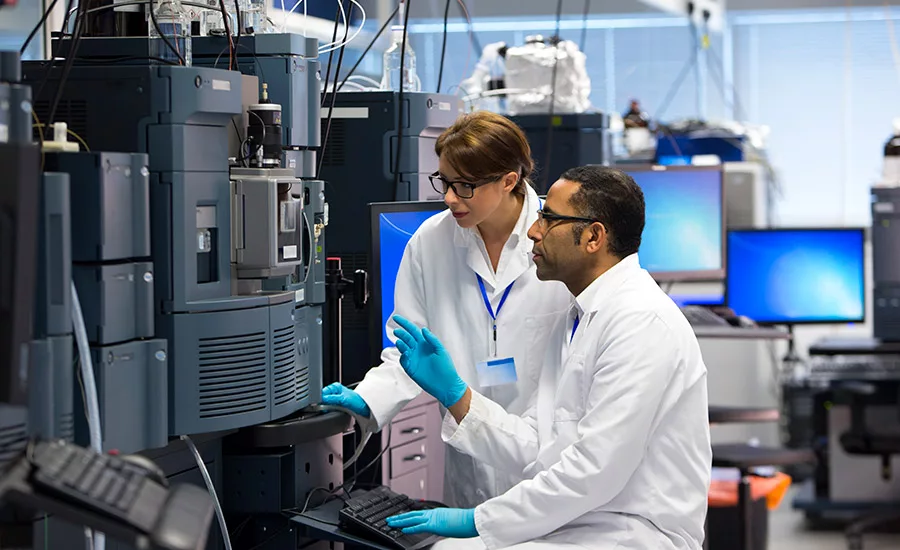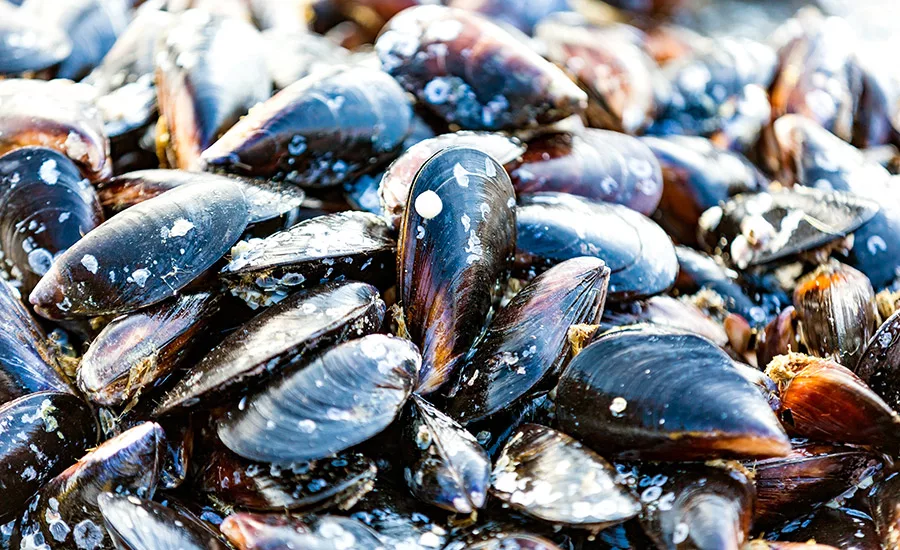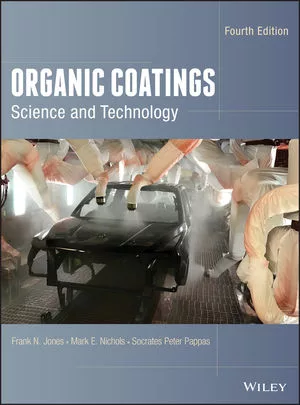Reversible Glue and Customizable Bio-Adhesive Patches: The Latest Adhesion Science
New research in adhesion science includes a reversible glue developed by a team at Newcastle University and customizable bioadhesive patches created by scientists at Pohang University of Science and Technology in Korea.

SolStock / E+

1001slide / iStock / Getty Images Plus via Getty Images
As the needs of industry and the demands of consumers change, scientists are working to develop new adhesion technologies both within academia and business. The demand for more sustainable adhesive technologies is always increasing. Likewise, as medical science advances, the adhesives used within medicine also require new research and development. In this article, we summarize three academic articles presenting new research in adhesion science: a reversible glue developed by a team at Newcastle University; customizable bioadhesive patches created by scientists at Pohang University of Science and Technology in Korea; and a review of the use of soybean protein adhesives in wood composites.
Reversible Glue
A research team has developed a reversible, water-based glue that has good adhesion in the neutral pH range, but can be detached again in strongly acidic or alkaline environments.1 The research was outlined in the article, “A reversible water-based electrostatic adhesive” published in the October 2023 journal Angewandte Chemie.2 The novel adhesive system, which is based on electrostatic interactions, has bond strengths somewhere between those of structural adhesives and pressure-sensitive adhesives. The new adhesive also bonds “difficult” surfaces such as water-repellent polypropylene.
Structural adhesive systems, such as two-component adhesives, form chemical bonds when they react and cannot be separated again along the adhesive interface. Pressure-sensitive adhesives can be cleanly removed by pulling. Adriana Sierra Romero, Katarina Novakovic, and Mark Geoghegan of Newcastle University in the UK have now found an alternative route to achieving adhesion and separation: charge interactions promote structural bonding along the interface, which can be neutralized and thus dissolved again.
To obtain the charge interaction, the team developed two separate water-based polymer dispersions to be applied to surfaces. In both dispersions, the base polymer was a copolymer composed of the inexpensive, commercially available components styrene and butyl acrylate. For one dispersion, the researchers coated the particles with the surfactant lauryl sulfate and polymerized acrylic acid, which together provide a negative charge in the neutral to alkaline pH range. For the other dispersion, they coated the particles with the polysaccharide chitosan, which contains positively charged amino groups in neutral or acidic environment.
Both polymer dispersions formed sticky coatings on a variety of surfaces. The researchers then observed that, when brought into contact, the coated surfaces stuck tightly together due to the electrostatic interactions between the positive and negative charges within the films. This was even true in humid or wet environments, which usually have a detrimental effect on water-based adhesives. However, when the pH was adjusted to one extreme or the other, by adding either a strong acid or base, the negative or positive charges within the glue were neutralized, and the adhesion disappeared.
The team say that the pH-sensitive adhesive system could serve as a novel, and recyclable, middle ground between structural adhesives with fixed chemical bonds and peel-off adhesive films that bond using physical interactions. They also emphasize that their novel electrostatic glue adheres well to highly water-repellent polypropylene surfaces, which are otherwise difficult to treat with aqueous adhesive systems. Finally, the team propose integrating a bio-based material from soybean oil into the base polymer, taking a further step toward environmentally friendly, recyclable bonding systems.
Read the entire article in Angewandte Chemie.
Customizable Bio-Adhesive Patches
In the field of medical adhesion research, scientists at Pohang University of Science and Technology in Korea recently published an article about using mussel-derived proteins in the development of bio-adhesive patches. Unique to this research is a customization element, which could lead to suturing adhesives that could be customized to different organs. Using mussel-derived adhesive proteins, Professor Hyung Joon Cha from Pohang University of Science and Technology (POSTECH), along with Ph.D. candidate Jang Woo Yang (POSTECH), senior researcher Hwa Hui Shin (K-MEDI Hub), and Professor Kang-Il Song (PKNU) have used the technology to create underwater bio-adhesive patches that are customizable. The research paper, “A Customizable Proteinic Bioadhesive Patch with Water-Switchable Underwater Adhesiveness, Adjustable Biodegradability, and Modifiable Stretchability for Healing Diverse Internal Wounds,” was published in the December 2023 issue of the journal Advanced Materials.3
As medical science continues to advance in the field of internal transplant devices, the need for adhesives that offer strong adhesion for these devices is growing. Among the characteristics required for such adhesives are strong underwater adhesion with minimal side effects. Also important in the development of these adhesives is the ability to customize certain characteristics — such as biodegradation time — to meet the attributes of individual organs. The adhesives developed by the scientists at Pohang University of Science and Technology combine the mussel adhesive protein with polyacrylic acid and polymethacrylic acid. Degradation time and the mechanical hardness of the adhesive are controlled by adjusting the ratios of the polyacrylic and polymethacrylic acids.
The research team created three types of customized adhesive patches and applied them in animal treatments and implants. These patches maintained high adhesion even in highly mobile organs such as the heart and bladder. They also conducted successful experiments in adjusting biodegradation times and flexibility during the transplantation of muscle regeneration electronic devices.
Professor Cha, the lead researcher, emphasized, "This research paves the way for personalized medical applications. We plan to enhance and refine the process through subsequent studies, with the goal of effective applications in diverse biomedical fields." Senior Researcher Hwa Hui Shin from K-MEDI Hub shared, "Our study has confirmed the effectiveness and versatility of the developed bio-adhesive patches. We look forward to their evolving into commercial products, meeting the demands of the healthcare sector."4
Access the article in Advanced Materials.
Soybean Protein Adhesives
An article recently released online and slated for the June 2024 issue of the International Journal of Adhesion and Adhesives5 reviews the latest developments on the use of soybean protein for wood composites. Researchers at the College of Materials Science and Engineering, Zhejiang Sci-Tech University, in China published the article, “A review of recent developments for applicational performances in soybean protein-bonded wood composites.”
According to the abstract of the article, researchers explored the use of soybean protein as a potential material for the production of eco-friendly wood adhesives. Techniques used to improve bonding properties and to functionalize soybean protein adhesives include molecular modification, cross-linking modification, organic-inorganic hybrid system construction, and biomimetic design. In the paper, the researchers provide information about recent developments in the production of adhesives derived from soybean protein. These include application requirements, including water resistance, low viscosity, fast curing, desired pre-pressing bonding properties, anti-bacterial properties, cost effectiveness, and flame resistance, among others. Also discussed in the paper are the structural properties of soybean protein molecules and bonding mechanisms of these adhesives when used in wood composites. The authors also present challenges encountered when developing soybean protein adhesives.
Read the entire article in International Journal of Adhesion and Adhesives.
References:
- Wiley. "Recycling of water-based adhesive achieved by changing pH." ScienceDaily. ScienceDaily, 13 November 2023.
. - Adriana Sierra‐Romero, Katarina Novakovic, Mark Geoghegan. A reversible water‐based electrostatic adhesive. Angewandte Chemie International Edition, 2023; DOI: 10.1002/anie.202310750
- Jang Woo Yang, Kang‐Il Song, Jaeyun Lee, Sungho Park, Hyungkyu Huh, Geunho Choi, Hwa Hui Shin, Hyung Joon Cha. A Customizable Proteinic Bioadhesive Patch with Water‐Switchable Underwater Adhesiveness, Adjustable Biodegradability, and Modifiable Stretchability for Healing Diverse Internal Wounds. Advanced Materials, 2023; DOI: 10.1002/adma.202310338
- Pohang University of Science & Technology (POSTECH). (2024, February 13). Personalized adhesives for inner healing – now tailored just for you. Science Daily. Retrieved March 15, 2024 from www.sciencedaily.com/releases/2024/02/240213130505.htm
- Shujun Zhao, Dehuan Kong, Xuebin Lian, Yifan Zhang, Shuangfei Xiang, Feiya Fu, Xiangdong Liu. A review of recent developments for applicational performances in soybean protein-bonded wood composites. International Journal of Adhesion and Adhesives, June 2024, Volume 132, 103676
Looking for a reprint of this article?
From high-res PDFs to custom plaques, order your copy today!





.webp?height=200&t=1713197356&width=200)

